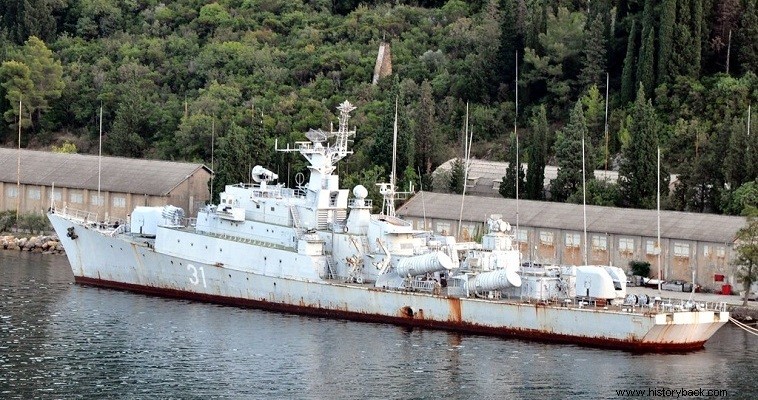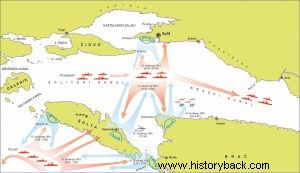
The "naval battle" of the Dalmatian channels was one of the few conflicts in the sea element during the Serbo-Croat war. The conflict lasted three days and took place on November 14-16, 1991. The Serb-Croat conflict has been going on since the early Middle Ages. It peaked before and during World War II. After the war the situation calmed down under the communist regime of Croatian Tito. After his death, however, frictions returned.
In 1990, the first conflicts broke out, while in October 1991, war officially broke out between the proclaimed independent state of Croatia and the disintegrating Yugoslavia which now consisted, almost exclusively, of Serbs and Montenegrins.
Croatian Serbs living on the Dalmatian coast rebelled, wanting their areas to remain under Serbian control. The Serbs laid siege to Dubrovnik, mobilizing the Yugoslav navy they controlled. On the contrary, the Croats, although they had put a few ships under control, relied mainly on their coastal artillery consisting of 76, 85, 88, 90 and 100 mm guns. Mostly it was about old tank guns, Soviet and German of the Second World War. The head of the coastal artillery was Admiral Sveto Letitsa.
The Yugoslav naval uniform
To blockade the Croatian coast the Serbs used two frigates, four missile boats, six patrol boats and three minesweepers. Altogether a considerable force of 15 men of war was assembled under captain Ilia Brchis. These vessels formed three regular groups.
However, the cause of the conflict was given by the Croats when, in the early hours of November 14, they torpedoed the patrol boat Mukos and sank it near Brac. The crew of the Yugoslav vessel called for help and the Tactical Group (TS) "Kaštela" – one of three – sent the patrol boat Pionir II to the aid of the stricken vessel while the other TS vessels opened fire on the Croatian coastal gunners.
The Mukos finally sank into the shallows, while three of their men were killed. However, the Croatian guns did not respond to the Yugoslav fire. Gradually the firing of the ships also stopped. The Yugoslavs sailed near Split between the islands of Brac and Solta, but then withdrew.
Firefight
Early the next morning the TS "Kaštela" returned and the ships began bombarding Split in retaliation for the attack on Mukos. State guns soon responded and hit the TS flagship Koni-class frigate VPBR-31 Split. Then the "Vis" TC rushed to the area. One of the TS boats opened fire on a boat carrying European observers.
Soon, TS "Vis" also began to receive Croatian fire to which it responded. In the meantime, TS "Kaštela" was removed. A little later Yugoslavs appeared and attacked the Croatian positions. The Croats shot down two of them. In the meantime the Croats towed the semi-submerged Mukos which they later repaired and joined their navy. On November 16, the third Yugoslav TS "Ploče" also appeared in the area, which together with the TS "Kaštela" sailed towards the channel between the islands of Hvar and Korcula.
But the Croats opened fire and hit two minesweepers. The frigate Split responded with her guns but the results were meager. Shortly after another Yugoslav ship was hit, Brcsis decided to withdraw his ships to avoid the worst. The badly hit minesweeper Iz, however, ran aground and was abandoned. And the second minesweeper hit, the Olib, sank finally off Hvar.
The results
The conflict ended with the humiliation of the Yugoslavs. In total they lost two ships (three with Mukos captured), two aircraft and 22 of their men killed. On the contrary, the Croats had only nine wounded, while the shelling in Split killed two foreign sailors of a merchant ship. The bombing of Split was considered a war crime by the Croats.
The bottom line for the Yugoslavs, however, was that their strong – relative to the non-existence of the opponent – their navy was defeated in a conflict where bad organization shone and the gradual involvement of TS in place and time. So while other ships were under heavy fire, others did not fire a single shot during the three-day conflict.
This fact alone speaks volumes for the level of training of the Yugoslav navy. Also, no cooperation was achieved with the friendly air force to identify and destroy the enemy targets. The Croats, for their part, had every reason to be happy. They had managed with their "ancient" guns to stop their superior opponents by sea.


